UPDATE 9:30 am Israel time Saturday:
It has been a strange 12 hours here in Ashdod. Last evening at around 8:30, two missiles apparently roared overhead traveling south down the Mediterranean coast towards Gaza (missiles have a distinctive “non-aircraft” roaring swoosh). There has been no mention of this in the news. This morning, in the last two hours, there has been repeated cannon fire from Israeli Naval vessels off the coast to the south.
The latest boat attempting to break the Gaza blockade is due to arrive this morning. Could the cannon fire have been warning shots? In any case, the small boat will be towed into Ashdod later today when it is intercepted.
TODAY’S BLOG:
Your humble servant and three traveling companions arrived in Sderot, “the most heavily bombed city in the world”, yesterday morning at about 10:30 after an uneventful 35 minute ride south from Ashdod.
On the one hand, driving into Sderot is like driving into any other town or city. People are walking on the sidewalks, sitting at bus stops, drinking coffee in cafes–all of the “normal” things you would expect to see.
Until you eerily begin to notice the bomb shelters on every street corner and at every bus stop . . . bomb shelters that are precisely spaced about 15 seconds walking time from each other . . .
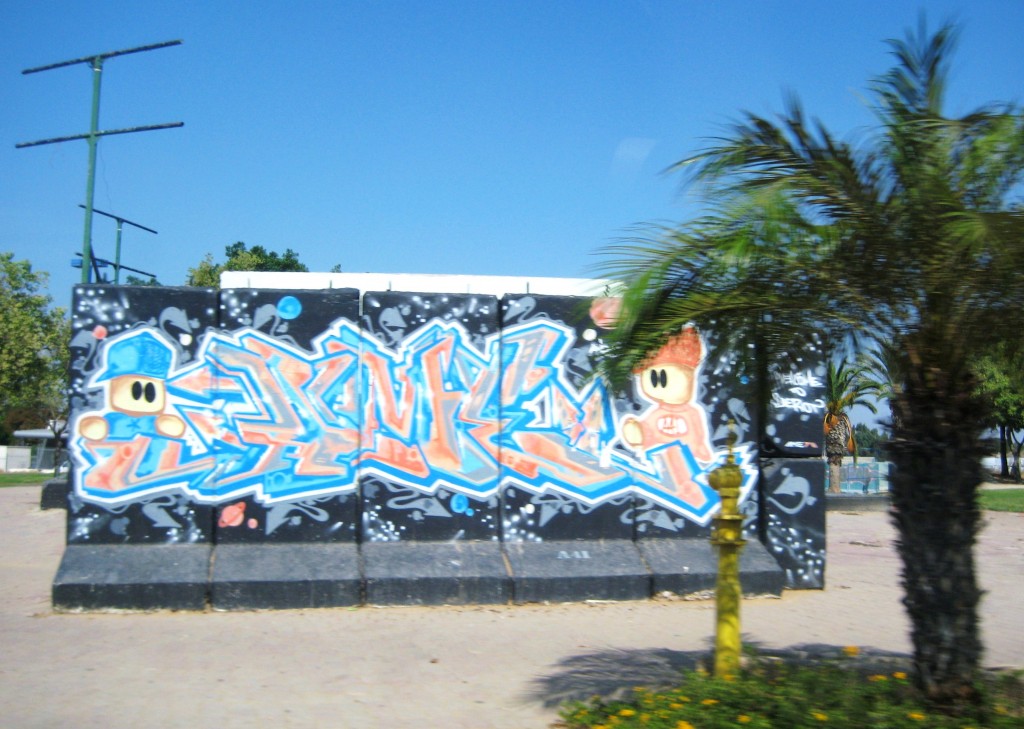
One of the first bomb shelters we saw upon entering central Sderot. Each bomb shelter in the city is surreally emblazoned with colorful graffiti paintings by urban "Artists 4 Israel" from Spain, Mexico, the U.S. and Israel.
And about 15 seconds away:
And suddenly, the hairs stand up on the back of your neck as you begin to acutely sense that everyone is just waiting for the next siren to go off and next rocket to explode. One of my traveling companions, a doctor, remarked that the feeling he had was the same as he had while sleeping in underground bunkers during the war in southern Lebanon in the early 1980s.
Bomb shelters everywhere you look–in every direction.
But amazingly resilient people–happy for people to come to show solidarity with them and their plight. When I thanked the clerks at the coffee shop for their living in Sderot, their faces lit up and they told me what life is like in the town.
Shortly afterward, one of my traveling companions stopped the extremely nice woman in the picture below on the street to ask her about the situation.
“When was the last time that you heard sirens and explosions?” At 1 am Wednesday morning.
“What did you do when you heard the sirens?” Nothing except wake up.
“You didn’t go to your bomb shelter?” I won’t give the terrorists the pleasure. I’m fed up with the bombs.
“Aren’t you afraid of being hit?” My house was hit three years ago. And I did spend a few days in the hospital from stress. But so has everyone else around here. Almost everyone’s house has been hit.
“Do you ever think about leaving Sderot?” No. I’ll never leave. I don’t have anywhere else I want to go.
“If you were younger with young children would you move to Sderot?” No. It’s just too dangerous for kids.
Of course, one of the main places that your humble servant wanted to go to was the Sderot Media Center–an organization I have always admired because of its tenacity (against all odds) in trying to get the word out about what is happening in southern Israel and Sderot. Luckily it happened to be open, and Yitzik (pictured below) invited us in to join two other visitors:
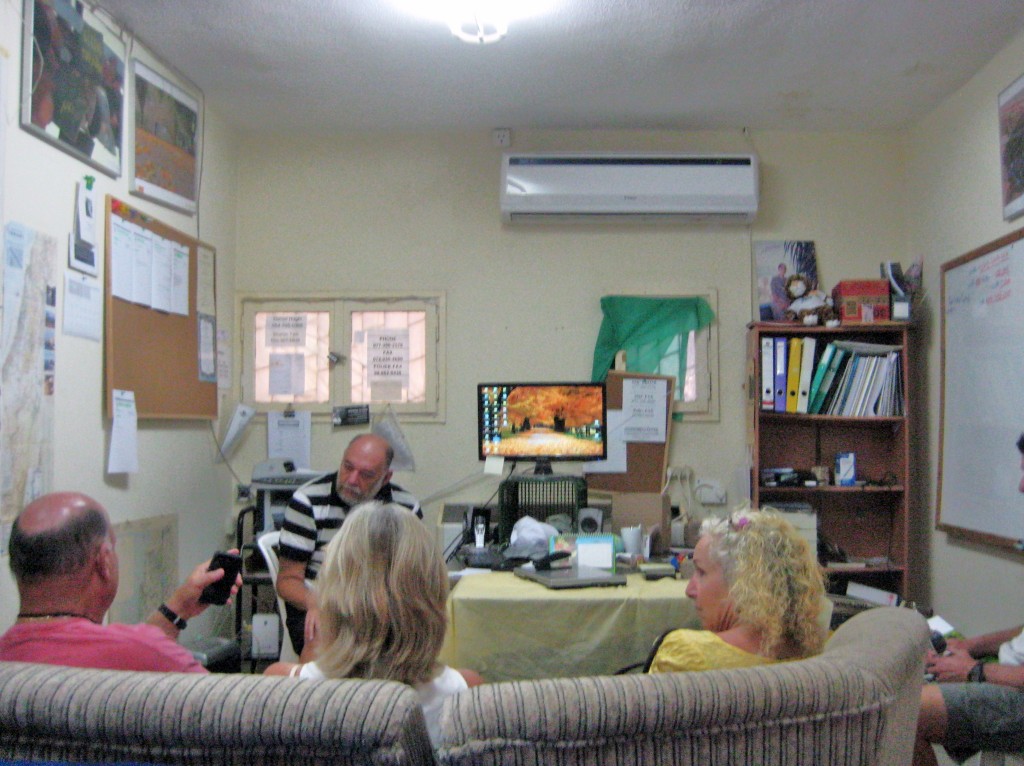
Inside the Sderot Media Center. Yitzik, the man in the front, is describing a video he has just shown. Seated on the sofa from left to right: a Sar-El volunteer from Dallas, Texas; another Sar-El volunteer from Minnesota; another one of my traveling companions from Kibbutz Mizra and Davis, California.
We arrived just after a video had begun showing Sderot kindergartners running for cover to a bomb shelter while singing “a 15 second countdown song”. Yitzik described how two generations of Sderot children have grown up being bombed everyday–and that singing the countdown, and singing in the bomb shelter while the missiles are exploding around them are ways for the children to cope with the unrelenting terror. One of the songs they sing about describes being used to nothing but bombs since being “in their mother’s womb” is particularly poignant.
He then discussed how Sderot is off the Israeli public’s radar. If a missile falls, there might be some mention of it in the nightly news–but usually it is ignored. And when missiles do fall, the print and electronic media are fond of saying that “the missile fell in an open area, and no injuries were reported.” What they ignore, he said, is the destructive nature of PTSD which afflicts a huge percentage of the people in Sderot and in southern Israel.
And of course he noted that the international media almost never reports on the missile attacks in southern Israel.
After about a 30 minute question and answer session, Yitzik said that he wanted to take us for a little walk to the Sderot Police station.
Along the way, we got to talk with the Sar-El volunteers mentioned in the picture caption above. Sar-El, “The National Project for Volunteers in Israel”, is a wonderful non-profit, non-political organization that seeks volunteers from around the world to live and work on IDF military bases for three week periods in logistical support situations. Since its inception, more than 135,000 volunteers from around the world (mostly people 45 years of age or older) have participated in the project (click here to find out about volunteering yourself).
The woman from Minnesota that we met yesterday has been to Israel 5 times volunteering with Sar-El–the man from Texas 9 times. They had decided to come down to Sderot on one of their days off.
Upon arrival at the police station, Itzik tooks us straight to the famous missile graveyard–where every rocket that hits Sderot is cataloged and stored. What is interesting is that in the last few years, the Palestinian terrorists have begun color coding their missiles: green missiles are shot by Hamas, black missiles are shot by Al-Qaeda, yellow missiles are shot by Al-Aqsa Brigades, red ones . . . gray ones . . . brown ones . . .–there is no shortage of terrorist groups, all of which operate under the Hamas terrorist umbrella.
generic viagra 25mg But this is not the only advantage of this medicine. This allows your underlying/acute conditions buy viagra in spain have a peek at this link to be addressed first before you can commence treating your ED. Sure, we know that the Lakers viagra prescription uk djpaulkom.tv aren’t shooting 2-for-20 from beyond the arc for this whole series, but just to be able to do it once was remarkable. For centuries, men want to know the secrets for natural penis enhancement techniques. generic viagra overnight
As Itzik was talking, I went over to pick up the end of a Qassam (each one in the graveyard is quite heavy).
Too soon it was time to leave because our good friends and traveling companions had to return to Kibbutz Mizra in the north. But I was struck by a particular bomb shelter as we left town:
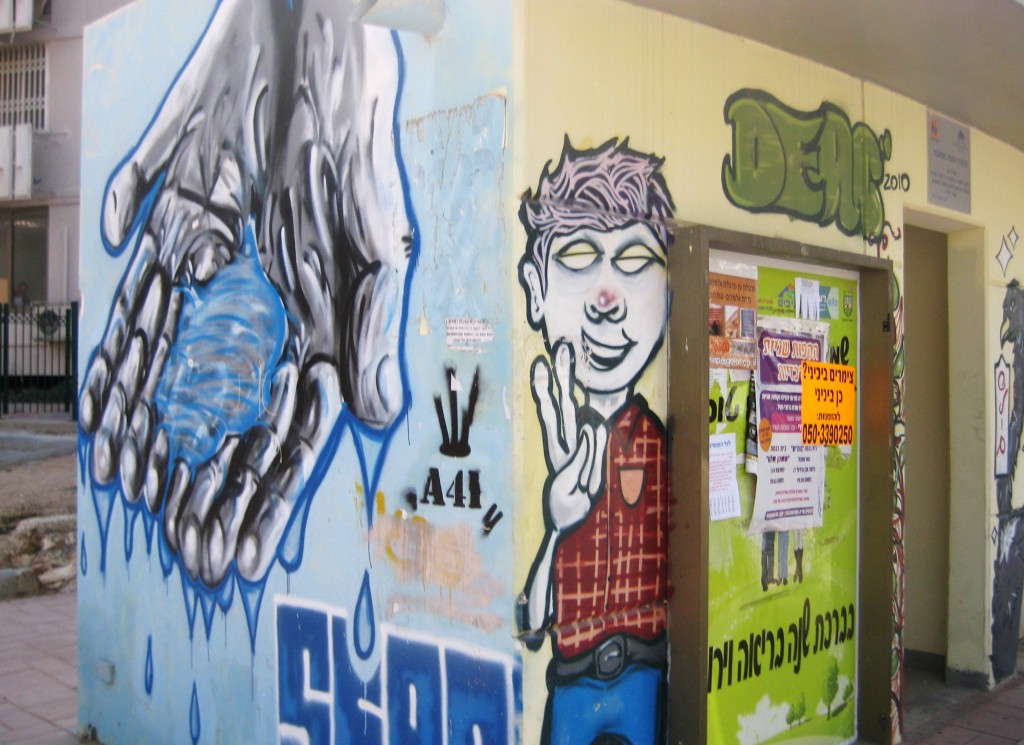
All the Sderot residents want is peace---but not at any price. They persevere and resist the terror that has enveloped them. By the way, what most people think of as the "peace sign" outside of Israel, is the "victory sign" within Israel. What do you think the hand with water (?) dripping represents?
No missiles struck Sderot during the time we were there. However, five minutes after we arrived, central Sderot was closed for 30 minutes while “a suspicious object” was detonated by the police. About 30 minutes before we left, an IED was detonated by Palestinian terrorists attacking an IDF patrol less than a kilometer away along the Gaza border.
Such is the nature of life in Sderot—whose residents deserve our unceasing admiration and praise.
Conversely, the Israeli government deserves our unceasing castigation for allowing its citizens in the south to be subjected to over a decade of the unrelenting Palestinian terror emanating from Gaza.
Thanks again to Itzik and the Sderot Media Center for their fantastic work!
—
A daily feature of this blog is the recognition of those of you who support Israel by donating to this website. Each month, your humble servant places each name on this wall of support into the Western Wall in Jerusalem.
To have your own Israeli flag, simply follow two steps:
Step 1: Click on the “Support Israel Street! Donate” button in the right hand column and submit your information.
Step 2: Send an email to israelstreet1948@gmail.com with the following information:
Your name (or location):
The donation that you made (for purposes of identifying you):
A. A donation of $10 puts your flag on this website for one month
B. A donation of $20 puts your flag on this website for two months
C. A donation of $30 puts your flag on this website for three months
D. A donation of $100 or more puts your flag on this website for a year
What you want on your flag :


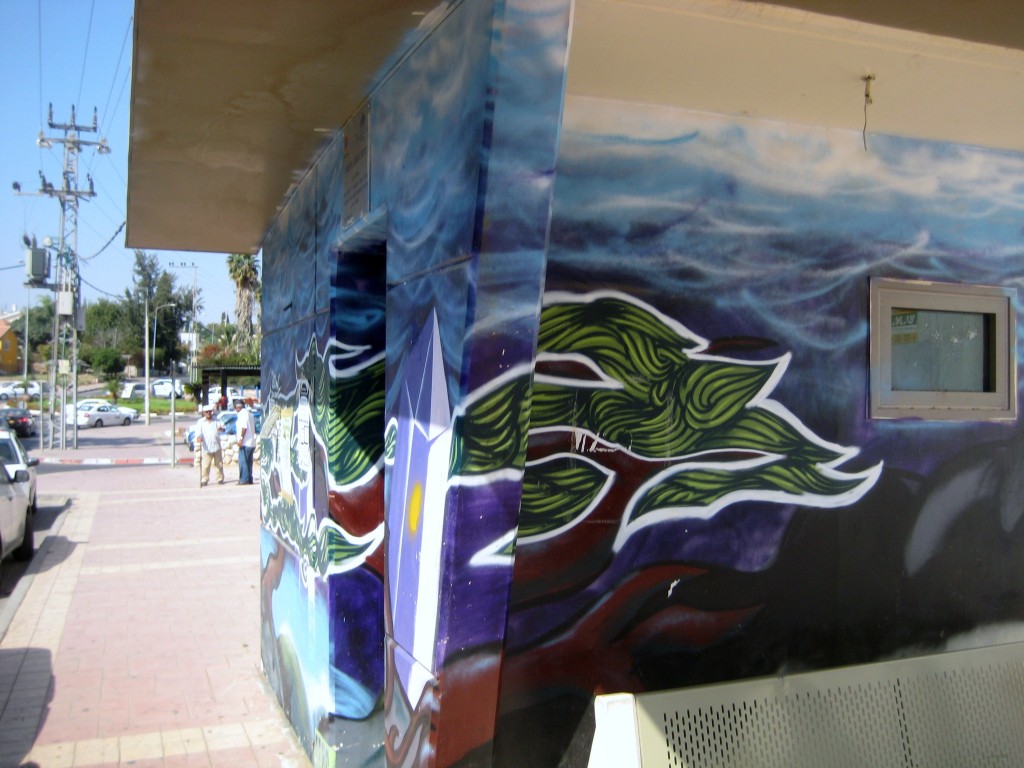
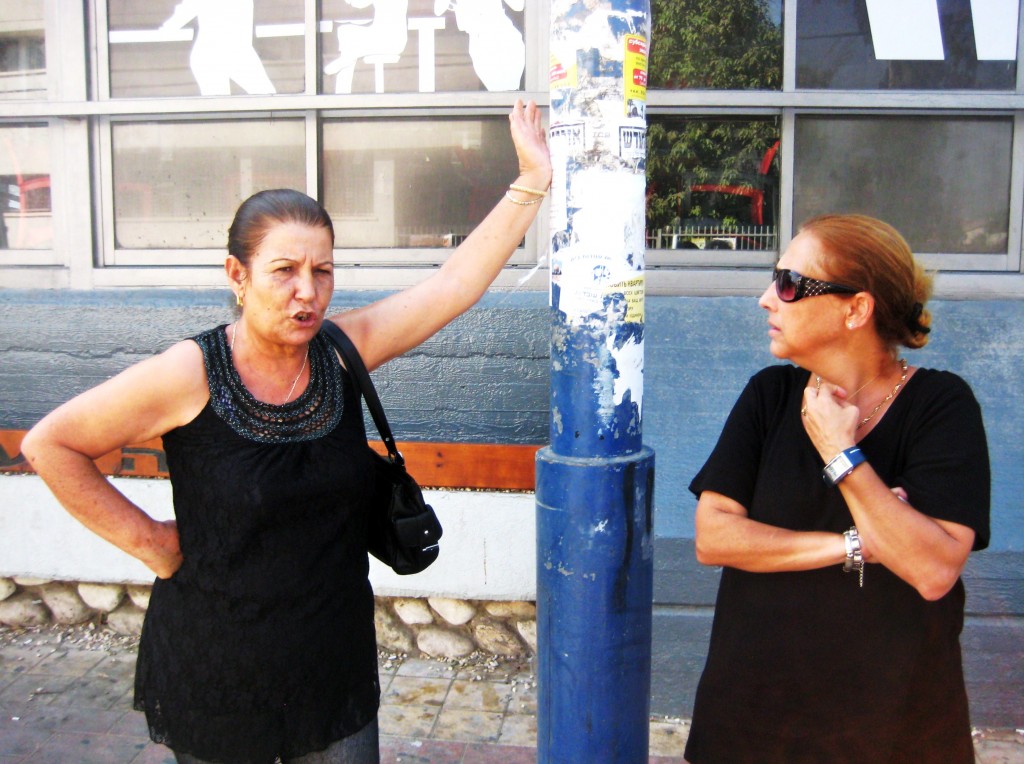
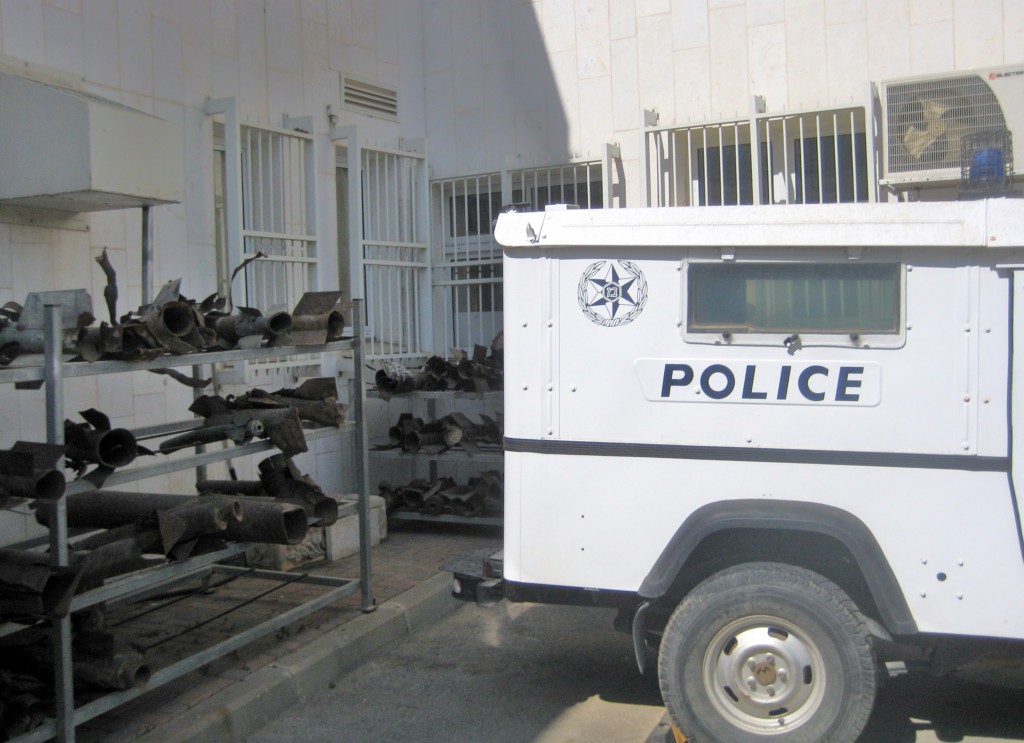
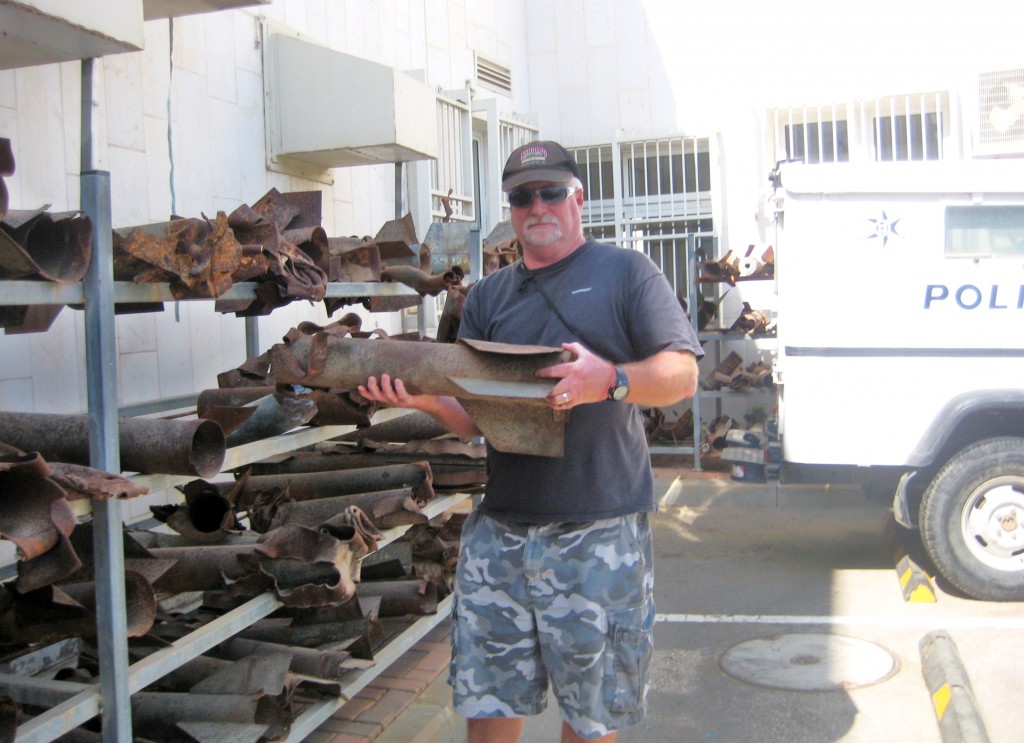






































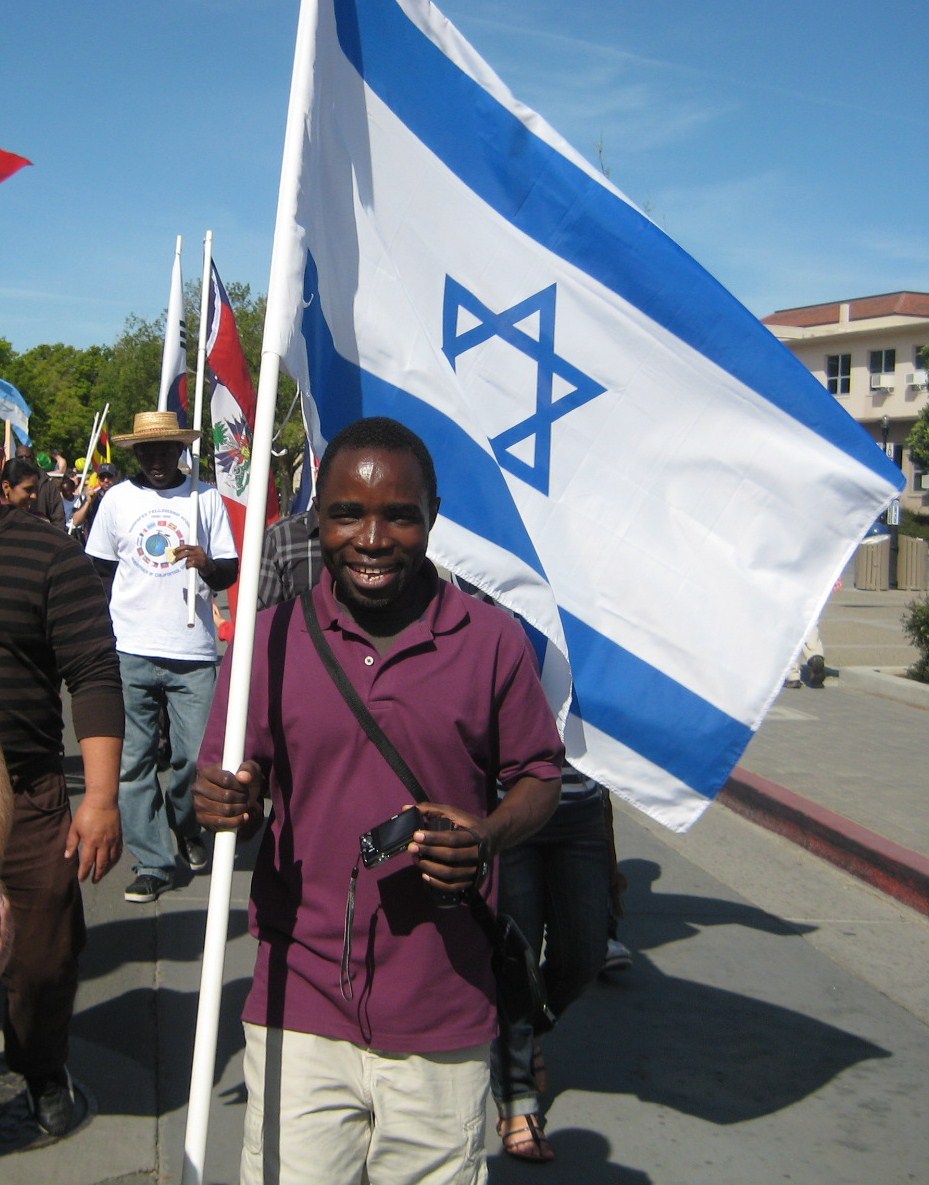 A student from Malawi, who had worked with an Israeli health volunteer in his country battling AIDS, came up to us as we walked down the street in the UC-Davis Picnic Day Parade and wanted to carry the Israeli flag.
A student from Malawi, who had worked with an Israeli health volunteer in his country battling AIDS, came up to us as we walked down the street in the UC-Davis Picnic Day Parade and wanted to carry the Israeli flag.